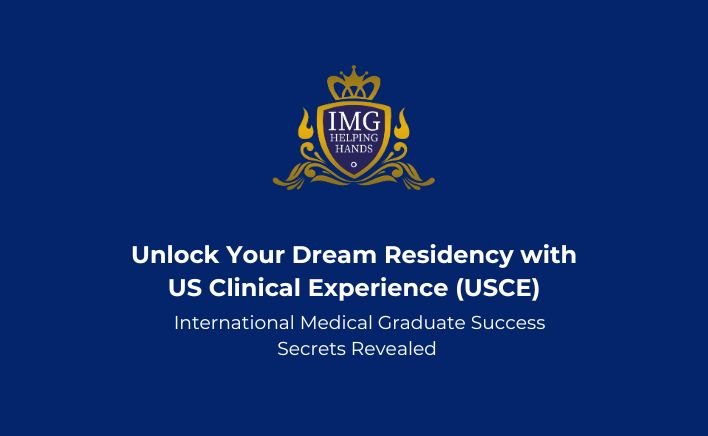

Clinical experience in the United States is extremely valuable for international medical graduates (IMGs) seeking residency positions. Hands-on exposure to the US healthcare system and training in your specialty can significantly improve your residency applications. This comprehensive guide will explain everything you need to know as an IMG about getting Residency with US Clinical Experience.
Obtaining clinical rotations and observerships in America allows IMGs to gain invaluable exposure to US medical practices, technologies, and patients. This hands-on experience enables students and graduates from international medical schools to better understand the US healthcare system and helps residency program directors evaluate candidates’ clinical skills. As competition increases for coveted residency positions, Residency with US Clinical Experience has become an essential factor for matching success.
Clinical rotations, clerkships, observerships and clinical rotations in the US, commonly known as USCE, provide international medical students and graduates with opportunities to get hands-on experience in American hospitals and clinics. This allows them to:
Residency program directors recognize the value of USCE when evaluating applicants. Clinical experience helps IMGs show they can provide high quality care for patients in the US medical environment. It also demonstrates their commitment to training in America.
While not an absolute requirement, USCE has become a critical component of a successful residency application for most IMGs. It enables candidates to address the clinical experience requirements of most programs. The hands-on rotations provide critical preparation for residency, where IMGs will treat patients.
There are several key reasons why obtaining clinical experience in America is so beneficial for international medical graduates:
Closing the clinical gap – Many IMGs come from medical schools with limited hands-on clinical training opportunities. USCE provides crucial experience treating patients in hospital and clinic settings.
Gaining cultural understanding – The US healthcare system has unique practices, technologies, regulations and patient populations. USCE exposes IMGs to the clinical environment and culture.
Building credentials – US letters of recommendation, clinical skills evaluations and rotation certificates help validate IMGs’ capabilities.
Improving communication – The clinical setting necessitates strong communication skills. USCE enables IMGs to improve medical English fluency.
Establishing connections – Meeting and working with American physicians provides invaluable networking opportunities for IMGs.
Confirming specialties – Exposure to different specialties helps IMGs confirm their optimal career paths before residency applications.
Strengthening applications – USCE demonstrates IMGs’ clinical capabilities and commitment to training in America.
Without properly addressing the clinical experience gap through USCE, IMGs are at a major disadvantage when competing for residency positions against US medical graduates.
The right US clinical experience can drastically improve IMG residency applications. Here’s how it benefits your CV:
Validates medical competence – Rotations demonstrate you can apply classroom knowledge to real-world clinical settings.
Provides specialty exposure – Experience in your chosen specialty confirms it’s the right fit.
Showcases communication skills – Interacting with patients and physicians highlights English proficiency.
Demonstrates adaptation – Working successfully in US residency healthcare settings proves you can thrive in residency.
Brings CV to life – Powerful letters of recommendation describe your clinical capabilities.
Offsets weaknesses – Clinical experience addresses the lack of US patient interaction.
Aligns with requirements – Meeting residency match program clinical expectations improves chances.
Fosters connections – Networking during rotations opens doors to more opportunities.
The more competitive your residency, the more critical it becomes to obtain quality USCE to showcase your potential.
There are several main types of clinical experience available to international medical students and graduates in America:
Overview: Rotations within US medical schools, arranged through school partnerships with IMGs’ schools.
Duration: Typically 4-12 weeks.
Eligibility: Limited to medical students enrolled in international schools.
Highlights: Gain exposure to academic medical settings and specialties. Earn medical school credit.
Overview: Observation-based rotations in US hospitals and clinics. Some opportunities to assist.
Duration: 2-4 weeks commonly.
Eligibility: Open to medical students and graduates.
Highlights: Learn by shadowing physicians. Flexible and easy to arrange.
Overview: Hands-on rotations in hospitals or clinics with direct patient care.
Duration: Typically 4+ weeks.
Eligibility: Limited, usually requires ECFMG certification.
Highlights: Provide the most hands-on clinical experience in the usa. Build medical knowledge and skills.
Overview: Clinical training programs sponsored by US hospitals. Both observation and hands-on opportunities.
Duration: Varies, typically 1-3 months.
Eligibility: Open to medical students and graduates.
Highlights: Structured experiences focused on building clinical skills.
The ideal USCE combines hands-on patient care opportunities in your chosen specialty with strong mentoring and evaluation.
If you’re an IMG interested in US clinical experience, what are the requirements and steps to make it happen?
With advanced planning and persistence, you can achieve your USCE goals as an IMG!
As an IMG, how do you determine what kind of US clinical experience will be most effective for your goals?
Your chosen medical specialty should guide the focus of your USCE search.
Since family medicine rotations are widely available, they are smart options for IMG students needing USCE.
Choose programs offering the most direct patient interaction possible:
Weigh all factors carefully as you evaluate the USCE options available to best support your career goals.
To get the most out of your US clinical experience as an IMG, keep these success tips in mind:
Observe intently – Carefully watch all aspects of care including physician interactions, technology usage and clinical workflow.
Ask questions – Don’t be shy to ask attendings or residents about treatments, decision making, or healthcare delivery nuances.
Take initiative – Volunteer for extra work, look up relevant research, and exceed expectations.
Build relationships – Get to know attendings, residents, and staff. Make memorable contributions.
Soak up feedback – Welcome both positive feedback and constructive criticism as opportunities to improve.
Confirm interests – Use the exposure to validate or alter your specialty choice as needed.
Log cases – Thoroughly document interesting patient cases to reference in your residency application.
Enjoy the experience – This is a unique opportunity to immerse yourself in American medicine.
In summary, here are the primary benefits that international medical students and graduates receive from US clinical experience:
There are certainly logistic and financial challenges for IMGs in obtaining USCE. However, the long-term payoff in terms of credentialing and career prospects makes the investment extremely worthwhile.
While not required, Residency with US Clinical Experience has become integral to the residency preparation process for most international medical graduates. The hands-on exposure enables IMGs to build crucial skills and validate their capabilities in a way that sets their residency applications apart.
There are diverse options such as electives, observerships, clerkships and clinical rotations for img programs to obtain valuable USCE based on your circumstances and goals. With advanced planning and persistence, IMGs can get the clinical training needed to achieve residency success in the United States. Those who recognize the importance of addressing the clinical gap through USCE will reap the benefits throughout their medical system.
Contact US to Get US Clinical Experience (USCE)
Get our most valuable tips right inside your inbox, once per month!